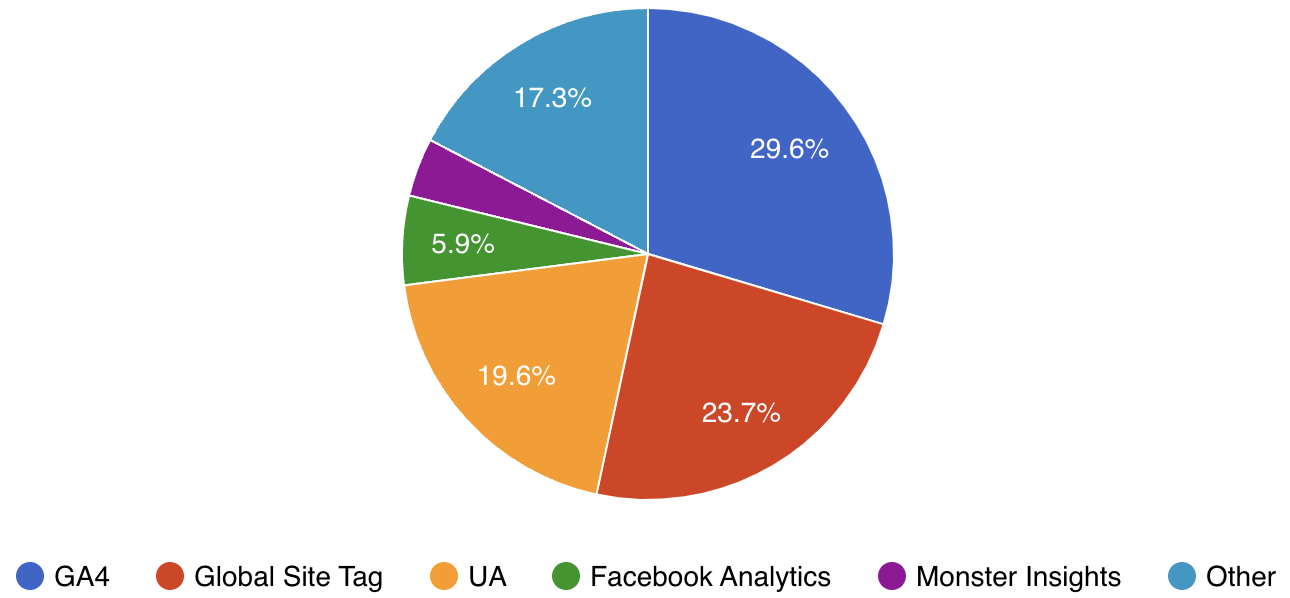Google is retiring (‘sunsetting’) Universal Analytics (GA3) in July 2023. For established sites and businesses, this means migrating to Google Analytics 4 (GA4) which fundamentally changes how users are tracked and how data is gathered. In this article, we will look at what is changing, why it matters and what this means for your business and how you can transition to GA4 simply and painlessly.
The Limitations of Universal Analytics (GA3)
Google has been regularly iterating and updating Analytics prior to GA4’s release in 2020, however, GA4 is arguably the most significant change in the mechanics and principles of Analytics in over a decade.
Why the change, and why now? Russell Ketchum, Head of Project Management for Google Analytics, explains:
“Universal Analytics was built for a generation of online measurement that was anchored in the desktop web, independent sessions and more easily observable data from cookies… This measurement methodology is quickly becoming obsolete.”
Two key drivers have forced Google to fundamentally change the collection and processing of website and app data: i) changing technology, in the form of new devices, browsers etc, and ii) changing governance, in the form of consumer-rights focused legislation such as GDPR and CCPA.
Historically, Google was able to rely upon cookies and single-sessions to identify and track user behaviour. The empowerment of users to take ownership of their data easily, opt-out of cookie tracking and even notify websites falling foul of data regulations with a single click, has made cookie tracking an archaic way of tracking user behaviour.
GA3 vs GA4: What is the Market Still Using?
The sunsetting of GA3 might be fewer than 6 months away, but the latest data suggests that most sites are lagging. At the end of 2022, research published by Statista showed that almost 20% of sites were still relying on data solely from GA3. Just over 53% had either GA4 installed or were using the Global Site Tag. Looking at the numbers of those websites still tracking through GA3 alone, it would be fair to say that there are 10s of millions of sites for whom the deprecation of GA3 will be a top priority in 2023.

Evaluating Your Analytics Setup
What data, events and dimensions you are tracking within Analytics is a question that you have perhaps not revisited since your initial setup of Google Analytics. It’s important to evaluate how all of your digital touchpoints across the business are tracking customer behaviour. The compulsory migration to GA4 is the perfect opportunity to evaluate your existing setup.
The GA4 Learning Curve
GA4 captures and reports data differently to that of GA3. There will be an initial phase of adjustment in leveraging the most out of the GA4 interface.
But, in return for the initial investment in time and training, GA4 offers an entirely upgraded level of reporting and control for marketers and webmasters.
Following your implementation of GA4, you will want to take the time to understand the enhanced reporting of GA4 in more depth as, whilst many of the dimensions and reports are recognisable from GA3, the layout and interface can give the appearance that these views and reports are no longer available. Taking a few minutes to click through the ‘Reports’ section and you will see many familiar views to that of the ‘Audience-Acquisition-Behaviour-Conversions’ layout, albeit with a greater focus on segmentation.
As overwhelming as these multiple options are, this is an illustration of the power of GA4 and a hint as to some of the other features and insights we can expect as further functionality is added moving forwards.
When Do I Have to Decide to Migrate to GA4?
Simply put; the earlier you start the migration process, the more data you will have available ahead of the deprecation date. There is also the opportunity to track both GA3 and GA4 data in parallel until 1 July 2023. During this ‘Parallel Tracking’ period, you can assess the metrics and dimensions in your new GA4 account without losing your existing tracking setup. Deciding to begin the planning and implementation of GA4 now will give you as much time as possible to verify you have similar or better data collection than with GA3, and to refine the setup in good time.
Below is a useful calculator that will give you a clearer visual idea of what data you will be able to collect and for how long.
GA4 Implementation Planner
Click the month for which you intend to implement GA4 (highlighted in Orange) and the calendar will show you what data and for how long it will track
Key Dates for GA4 Sunsetting
You will be able to view historical data for GA3 until 1 February 2024. It will not be possible to view or access the reports from within your existing Analytics set-up beyond this date, so you should export any data prior to the February switch-off.
| Event | Date | Reminder |
|---|---|---|
| GA3 Sunsetting | July 1st, 2023 | |
| Final month for parallel tracking | June 1st, 2023 | |
| Final date to download historical data | February 1st, 2024 |
